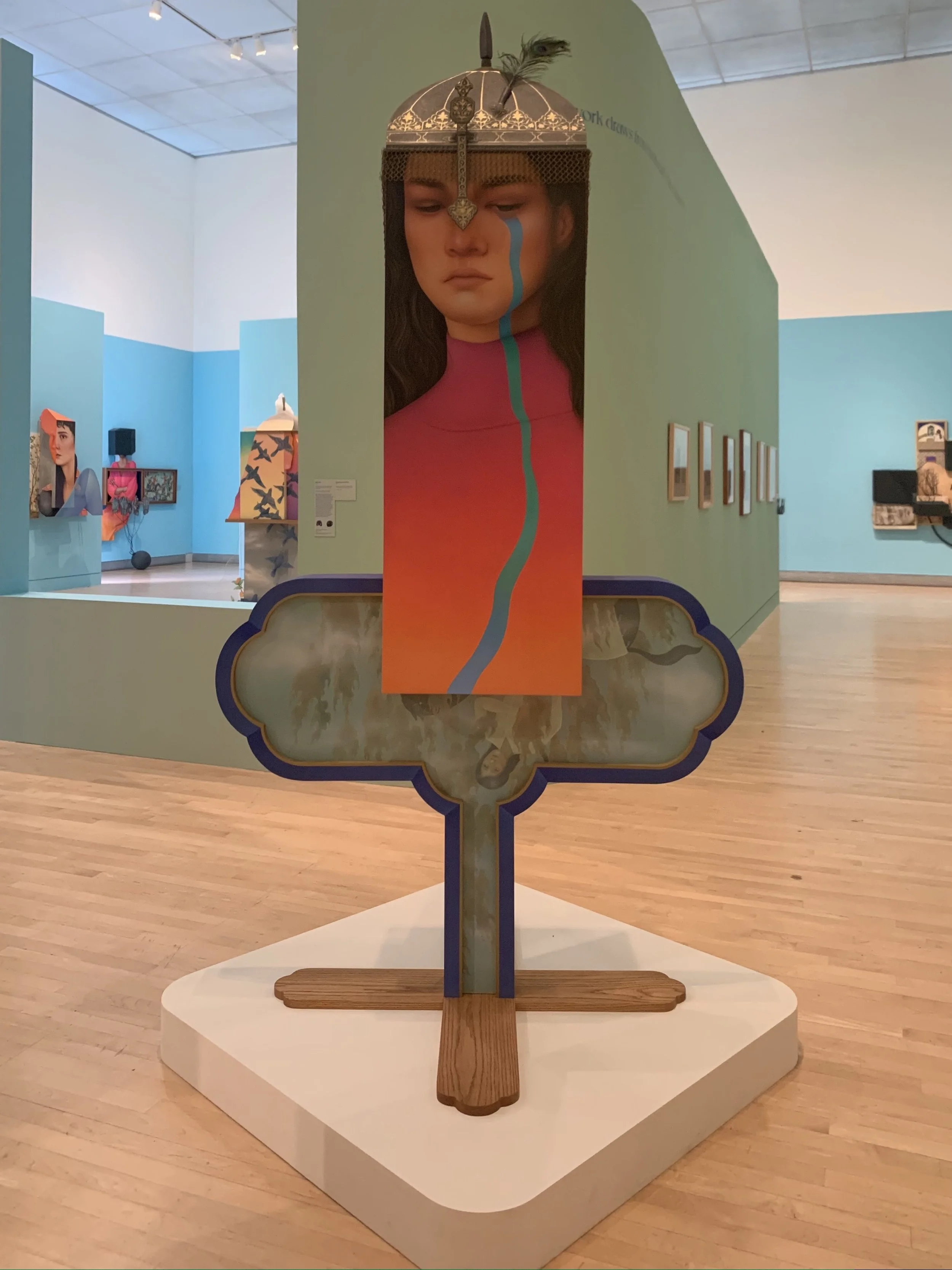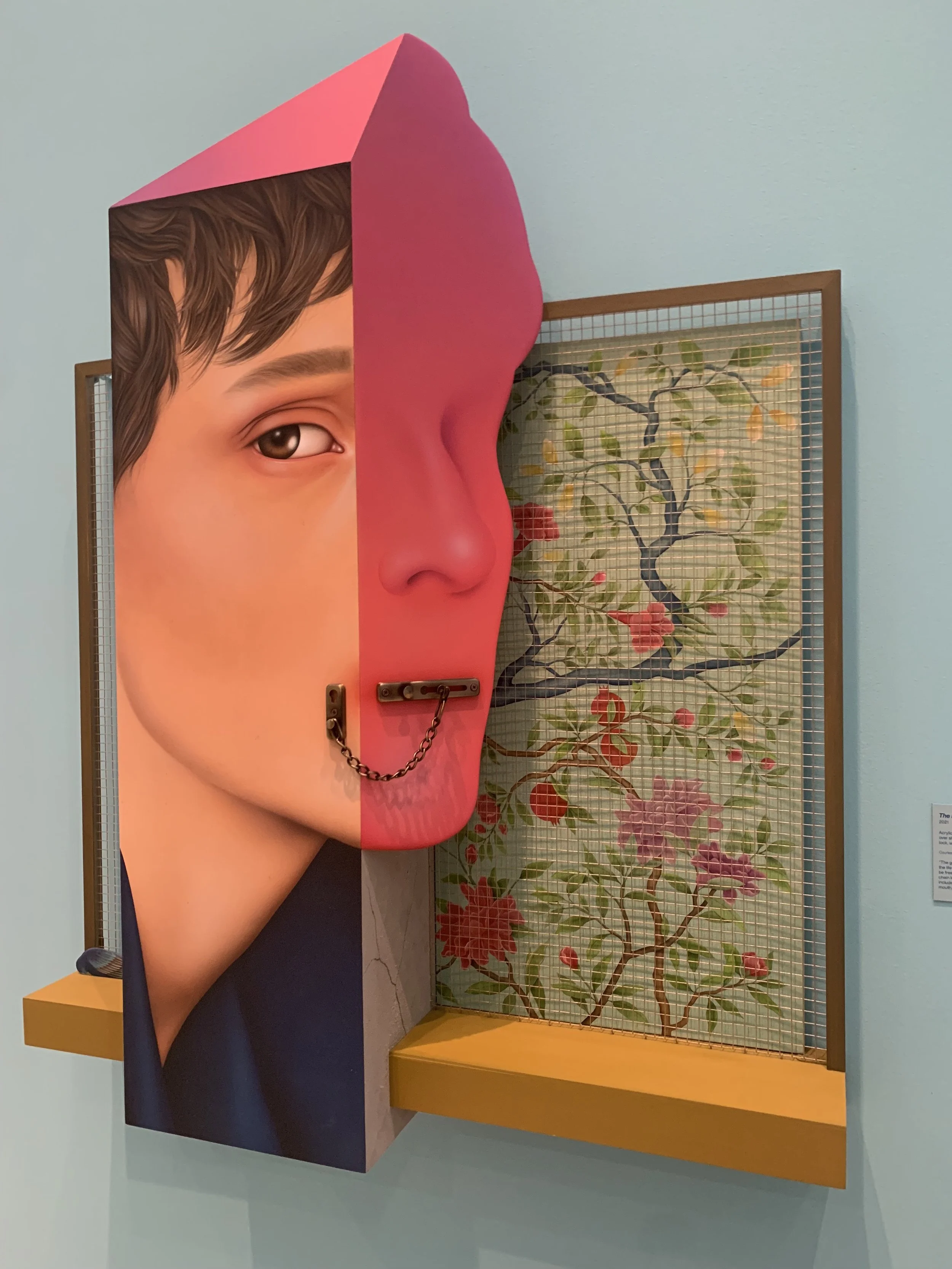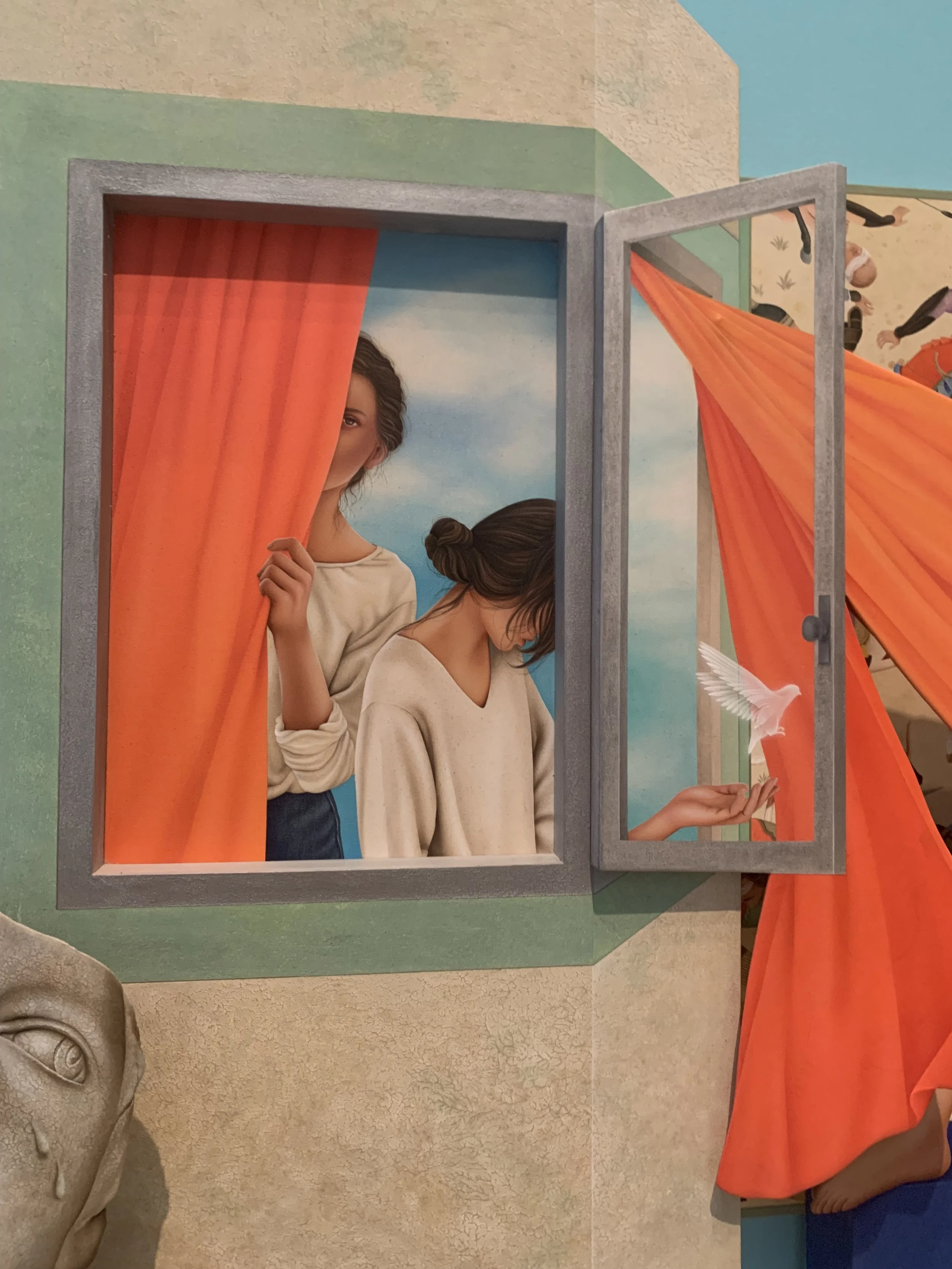Echoes of Self: A Note on Arghavan Khosravi's Black Rain Exhibition at Rose Art Museum
Visually captivating, meticulously crafted, intricately layered, and multi-dimensional. Black Rain is a well-designed exhibition best to be seen in person at the Rose Art Museum through October 2023, in which the scale of Arghavan Khosravi’s artworks, the vibrant colors and harmonious compositions have a strong presence and effect over the viewer.
The artist sums up her work in one word: contradiction. It mirrors the dual life experienced under an Islamic theocracy in Iran. She firmly states, “I am not interested in perpetuating notions of cultural exoticism and portrayals of Iranian women as victims. My work is a vehicle for shifting power.”
When approaching womanhood within the realm of art, we need to consider that the portrayal of women, particularly Iranian women carries profound symbolism. It is undeniable that employing loaded imagery such as a lock on a woman's mouth, or depicting her with elements like a ball and chain, even painting women within the confines of a domestic setting, evokes powerful connotations. These visual cues resonate strongly with themes of patriarchal dominance, the subjugation of women, and a perceived absence of autonomy. Such interpretations are especially salient within a predominantly Western context.
I argue that regardless of the specific artistic composition, the very introduction of an Iranian female artist inherently activates these entrenched semiotic frameworks. This phenomenon is further heightened when the artwork in question prominently features female protagonists. In essence, it underscores how pre-existing narratives regarding gender dynamics are inextricably interwoven with the artist's identity and her creative expressions.
This leads us to a critical inquiry: do the additional components within the artwork contribute a level of conceptual intricacy substantial enough to augment and enrich the swift conclusions drawn by the viewer regarding the work's message and underlying intent? As an Iranian observer, I acknowledge the artist's skillful incorporation of references from Shahnameh, Persian miniatures, and significant social movements like Woman, Life, Freedom. Nevertheless, it remains my contention that the pervasive sense of subjugation remains undeniably potent. Even with the robust infusion of Persian cultural elements, it appears unable to outshine or eclipse this prevailing narrative.
Much like a writer who draws inspiration from diverse sources, be it personal experiences, mythology, or cultural heritage, Arghavan, in my view, has crafted a character living a distinctly defined life. This character traverses from one sculptural painting to another like different frames of the same movie. The notable resemblance in expressions, activities, and spatial engagements among these painted female figures prompts me to assert that they represent not distinct individuals, but rather facets of a singular existence. This challenges the notion that these female protagonists are alter egos. Instead, it provides a limited window into a life that may or may not encompass the breadth of experiences adopted by women in societies like Iran.
In contemplating these potent portrayals, we find ourselves at an essential crossroad. The resonance of what I’m calling "Tamed Protagonists" challenges us to consider the very essence of transformation at play. What metamorphosis of culture is subtly unfurling here, and how does it ripple through the intricate fabric of power dynamics? These are not merely questions for the artist, but for each observer, as we navigate the evocative terrain of Khosravi's work. In honor of artist’s original intention for her art to be a catalyst for shifting power, I find myself pondering: how are these artworks pushing the existing power dynamics and is it more fitting to see this body of work as a personal expression rather than a collective voice?
Oct2023






